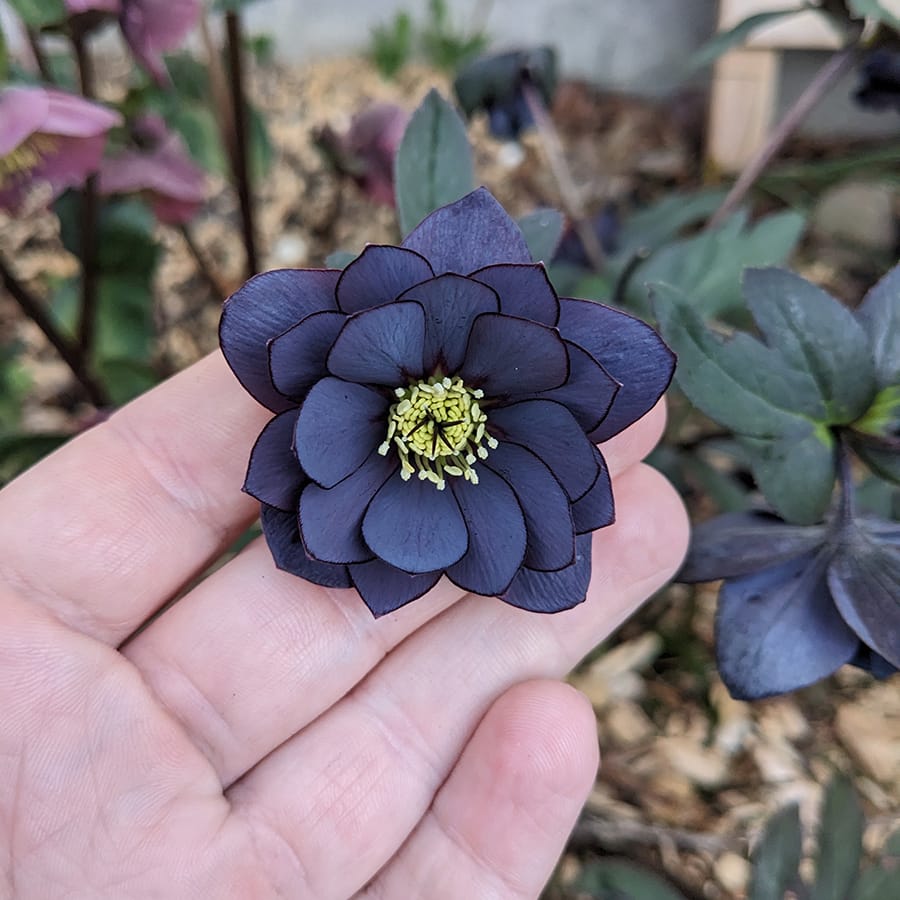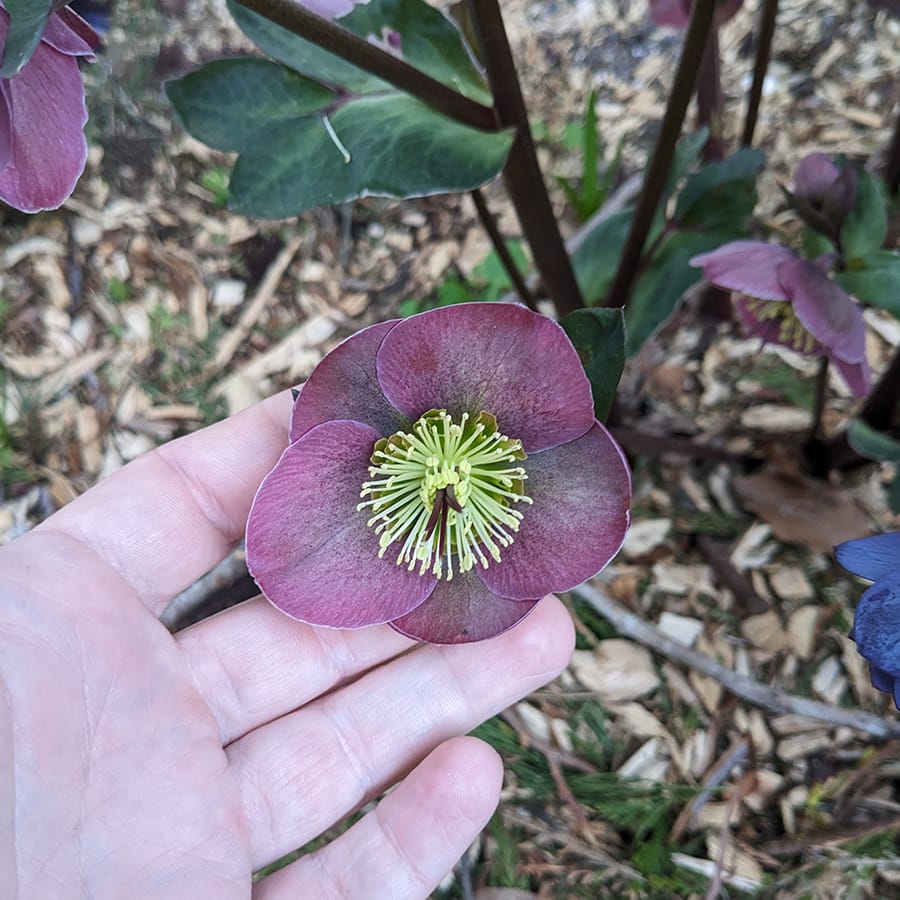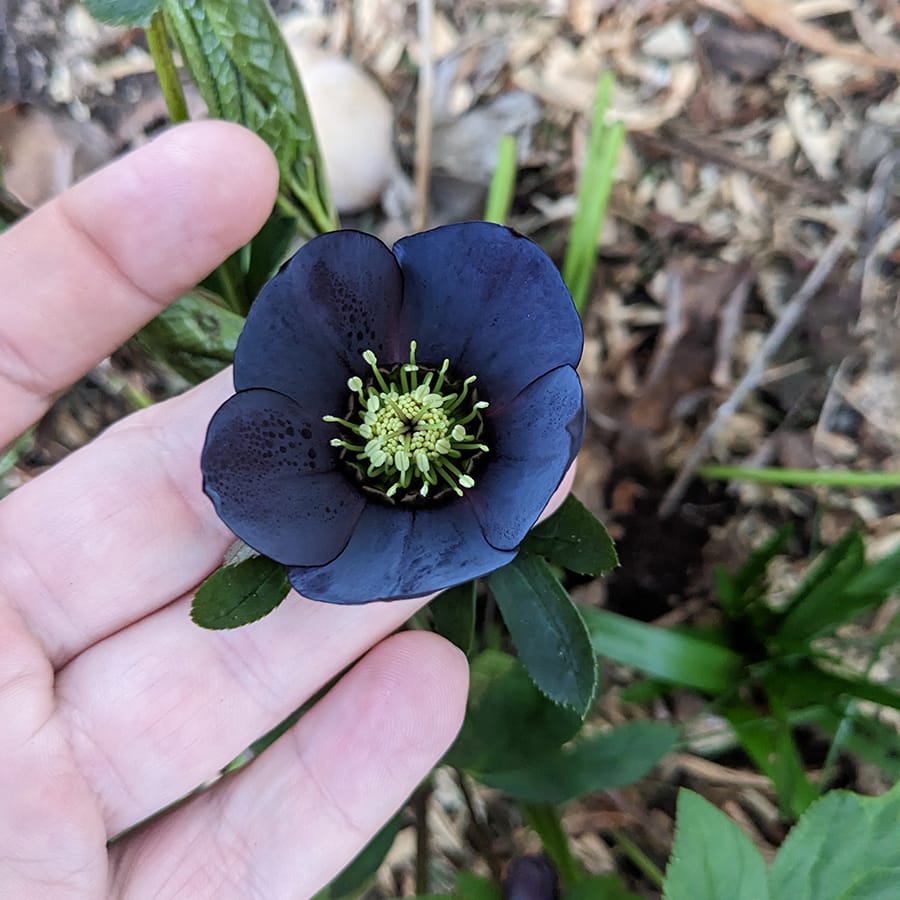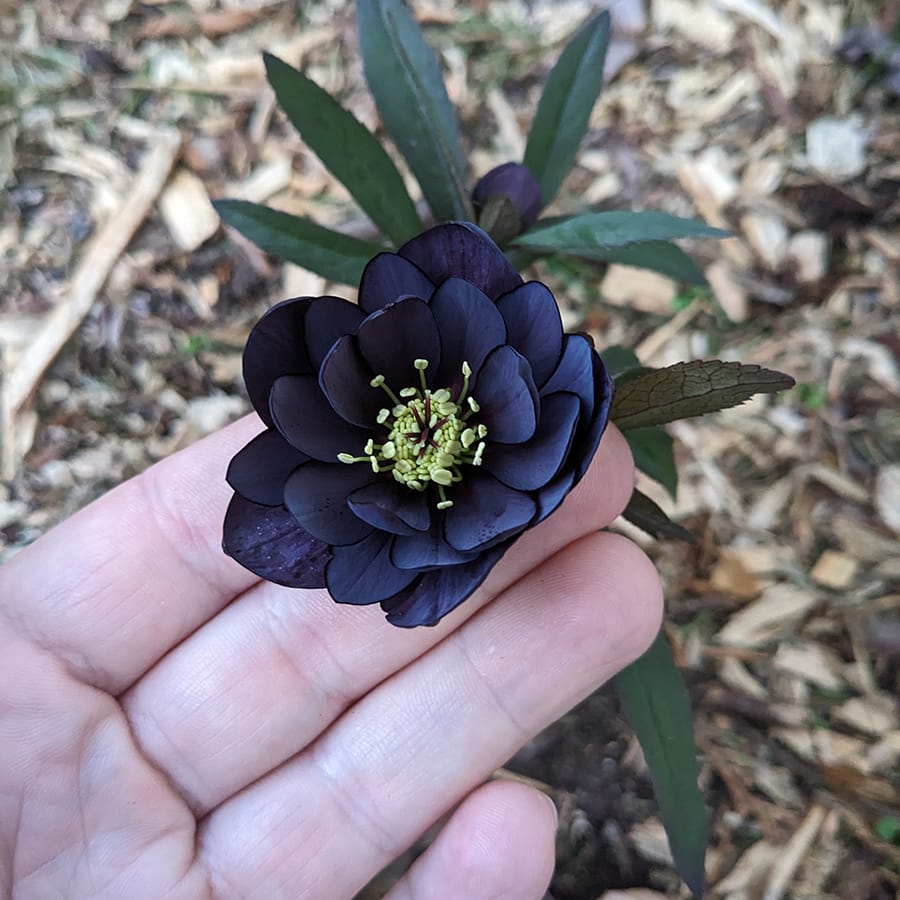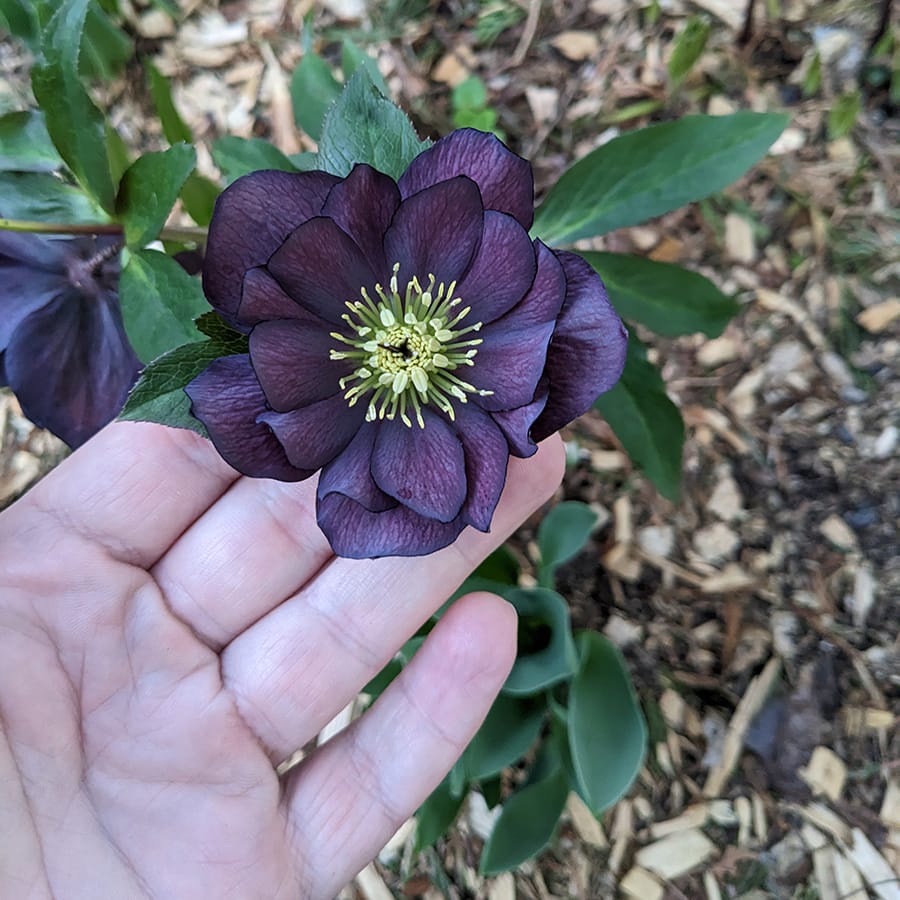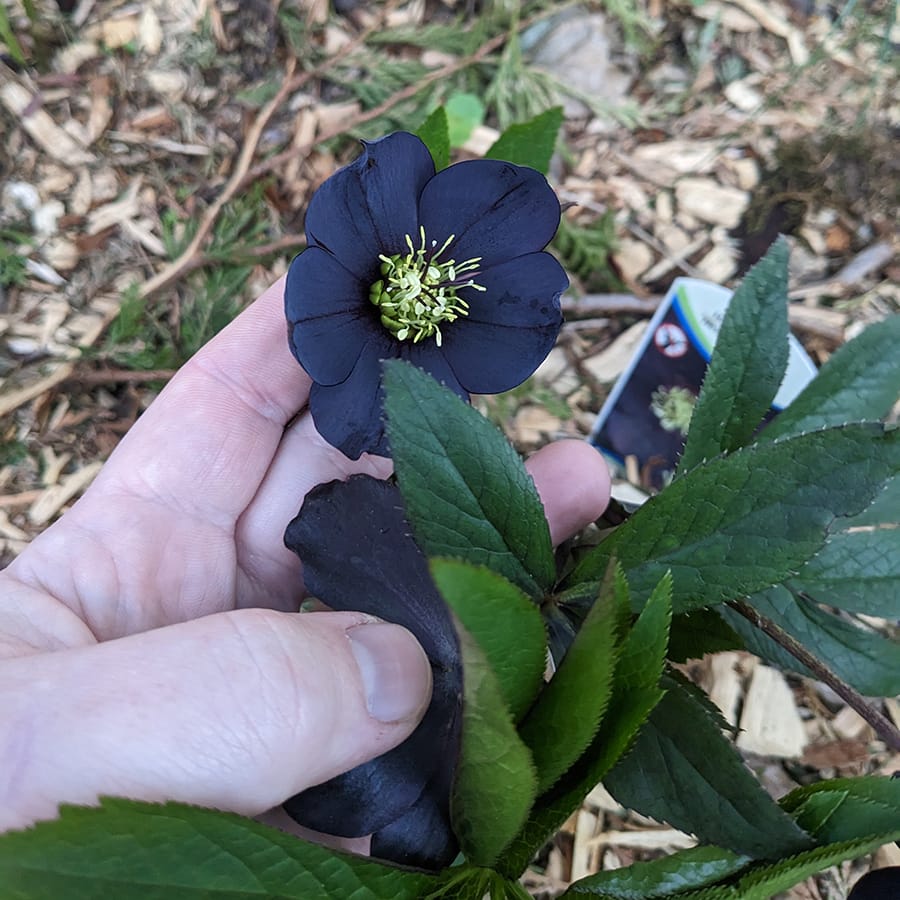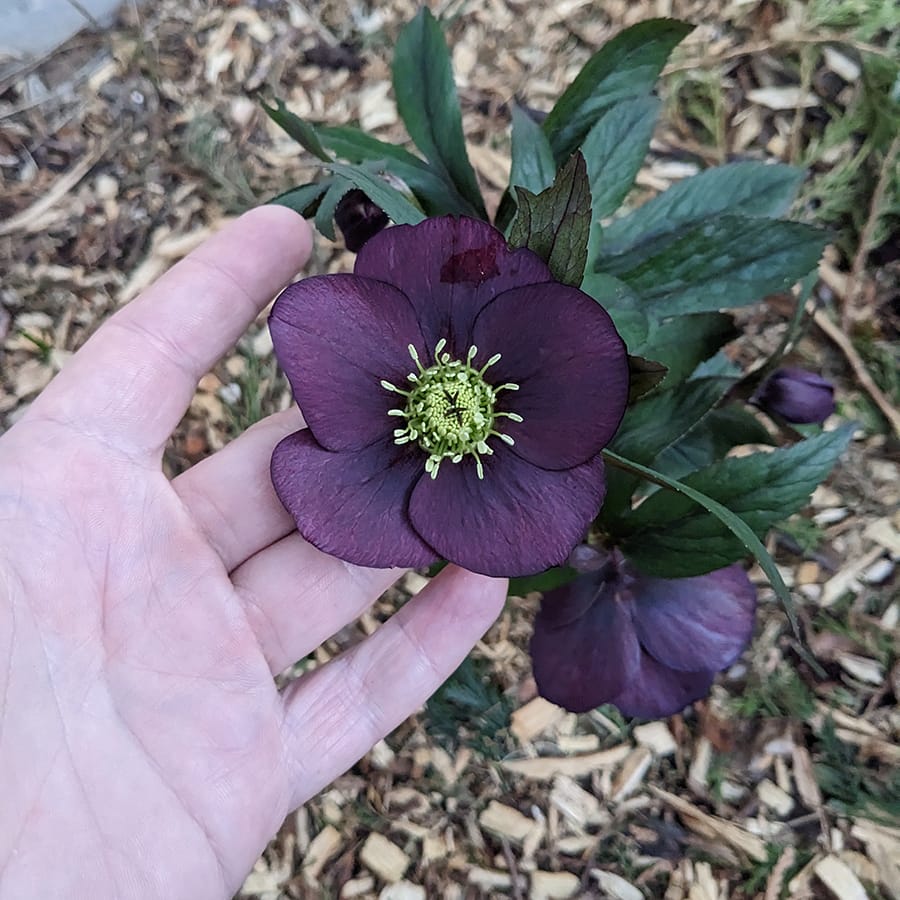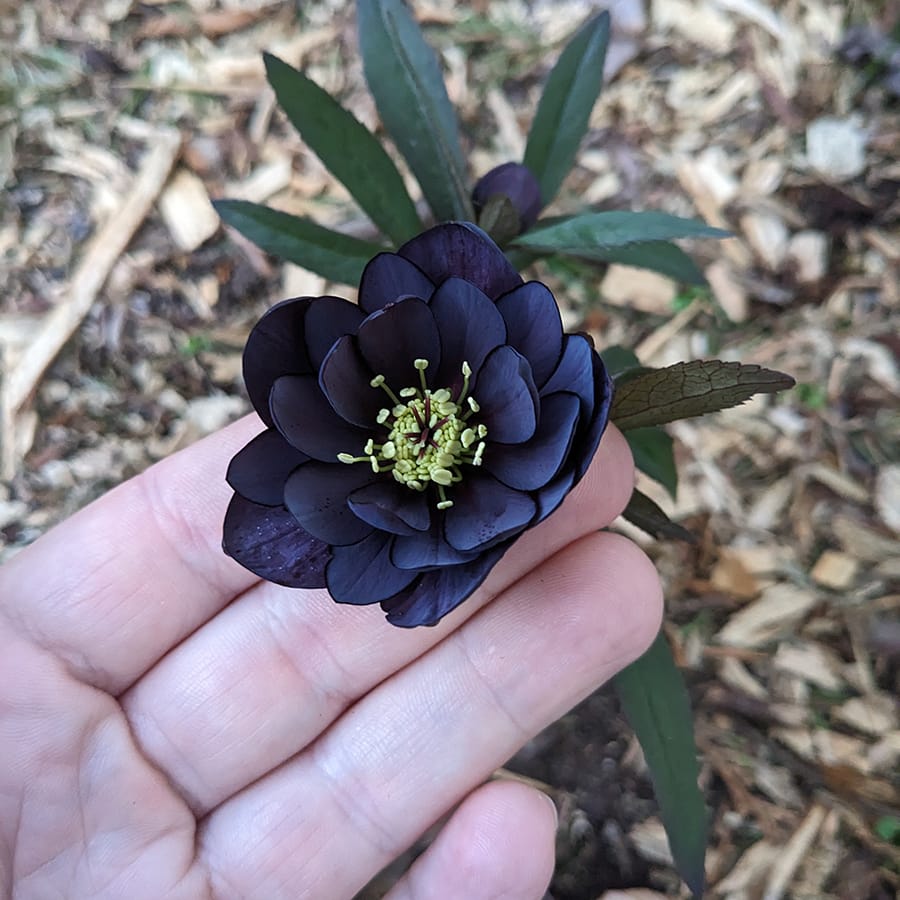
Raising Hell(ebores)
I can't remember exactly when I started collecting hellebores other than it was in the past decade and my first plant (an Onyx Odyssey) I lost to improper care (fungal rot). Despite this rough start I have been successful keeping my hellebores alive since and in the past couple of years have started trying to develop crosses of my own.
The road to hellebore cultivation is somewhat longer than most perennial flowers. While they will cross relatively easily by hand (and even better by bee) the seed development period is fairly long, taking several months to develop ripe pods of thick tick-tac sized glossy seeds. The first hurdle to cross when raising your own hellebores from seed is to collect them at the right time. Unlike most seeds folks are used to dealing with which are good for several months if not a few years if kept well, hellebore seeds are best planted fresh from the pod and chance of germination drops of sharply after a few days unless kept somewhat moist and or refrigerated if their planting medium isn't ready. If buying hellebore seeds online (not recommended) make sure the supplier has listed the date collected (it should be within 9 months) and that the seed has been kept cold without freezing. Collected too late is one issue, collecting too early is another. For the best chance at getting healthy hellebore seedlings you should begin monitoring the seed pods when they start to get plump late spring/early summer. If the pod starts to open at a gentle touch or starting to open already NOW IS THE TIME to collect the seeds.
Once you have hellebore seeds and have hit the time window for freshness you now face your next hurdle of getting them to germinate. It takes up to 9 months for hellebore seeds to germinate in optimal conditions. Most of my seeds taken fresh germinate around the 7 month mark and no earlier. This is deep in winter territory with most of my seedlings showing up through January and February. Prior to this the seeds in their planting medium are best kept outside somewhere shady and kept from drying out. I have had the best luck using straight coco coir as the planting medium in 1+ gallon pots for moisture retention with the seeds planted 1/4 - 1/2 inch deep.
With your seeds in your medium and your pots in the shade you now need to protect them from birds, bugs, slugs, and other seed eating beasties. I find that 1/4" galvenized wire/hardware cloth or even some outdoor mosquito/bug screening works best.
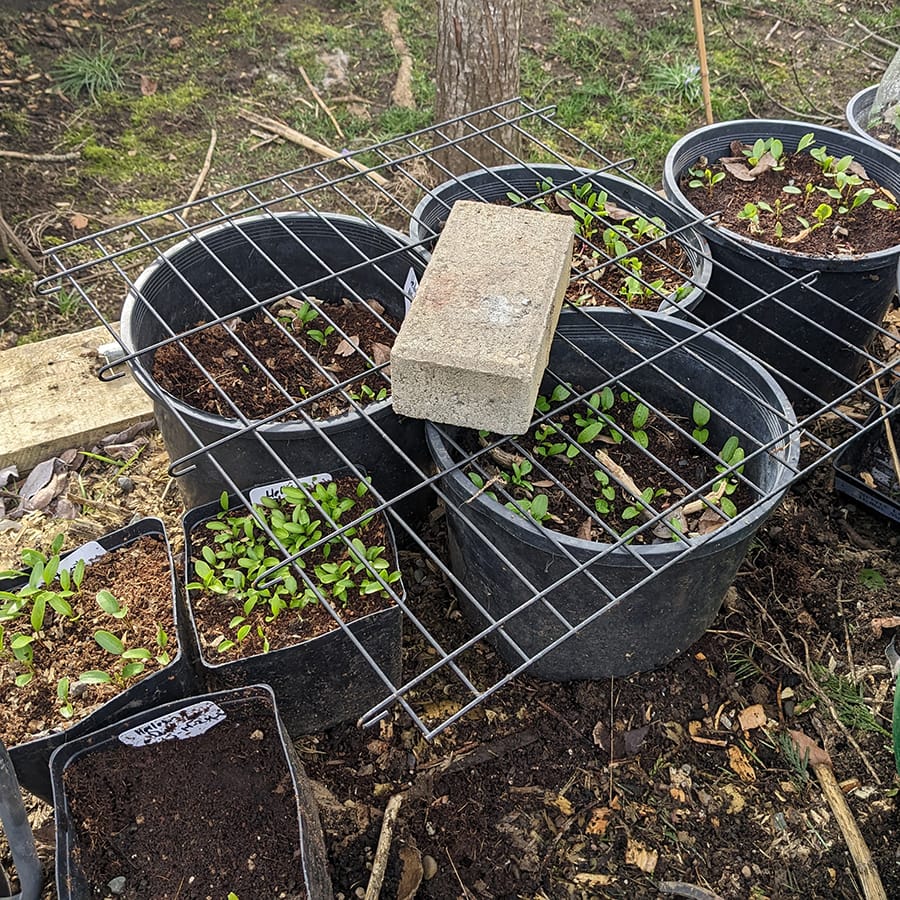
Once winter hits I move my pots out of the shade and out on the patio where I can monitor them a bit better with the previously mentioned guards in place to keep creatures out of the seeds. Once germination starts larger less close knit guards can be used and allow for some air circulation. Once you have seedlings popping up the first trial is over, hellebores have incredibly hardy seedlings and readily take to transplanting once they start putting up their second set of leaves (i.e. true leaves).
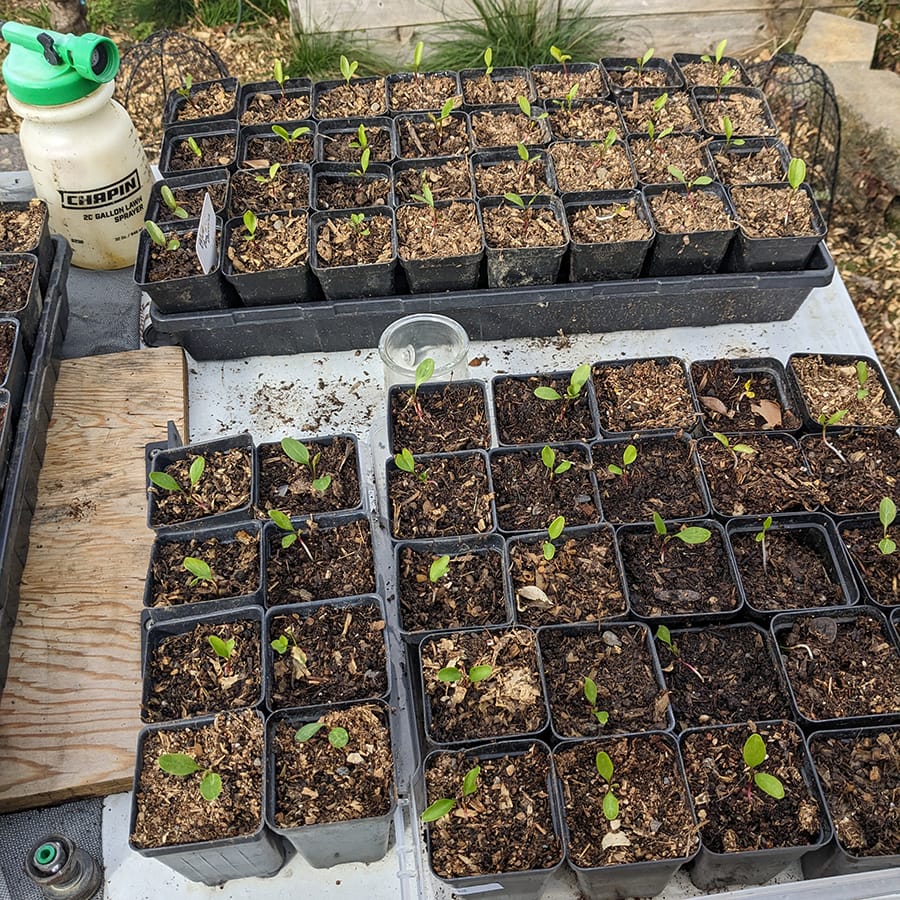
Once the seedlings start looking fairly hardy I start teasing them out of the coco-coir medium and potting them up individually in 2" pots with a mix of coco-coir, aged compost, fresh compost. Measuring isn't too important here, I just go for a fluffy planting mix.
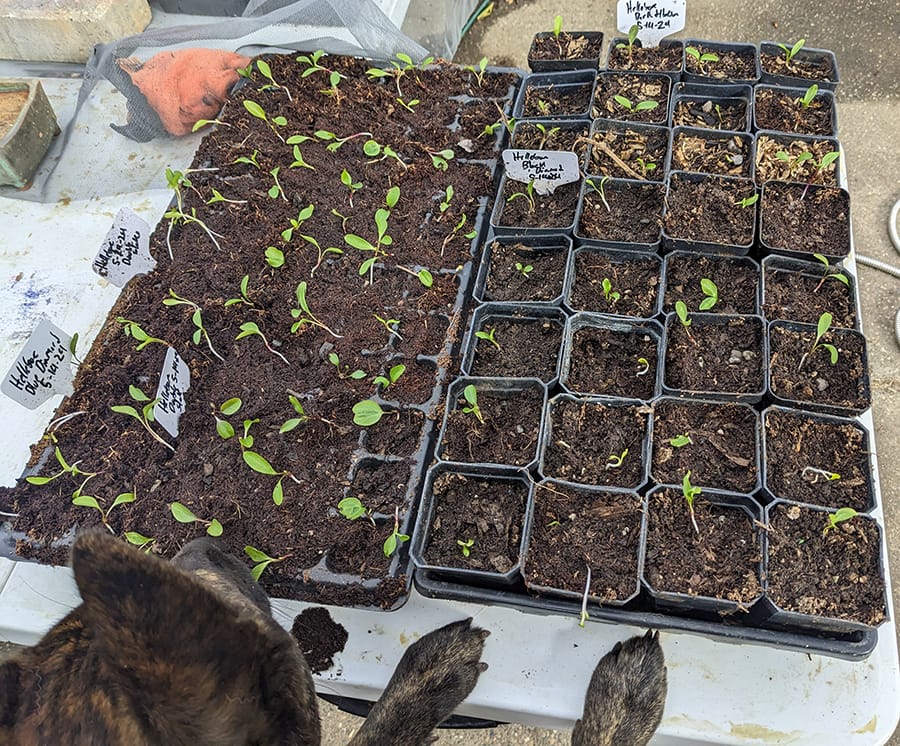
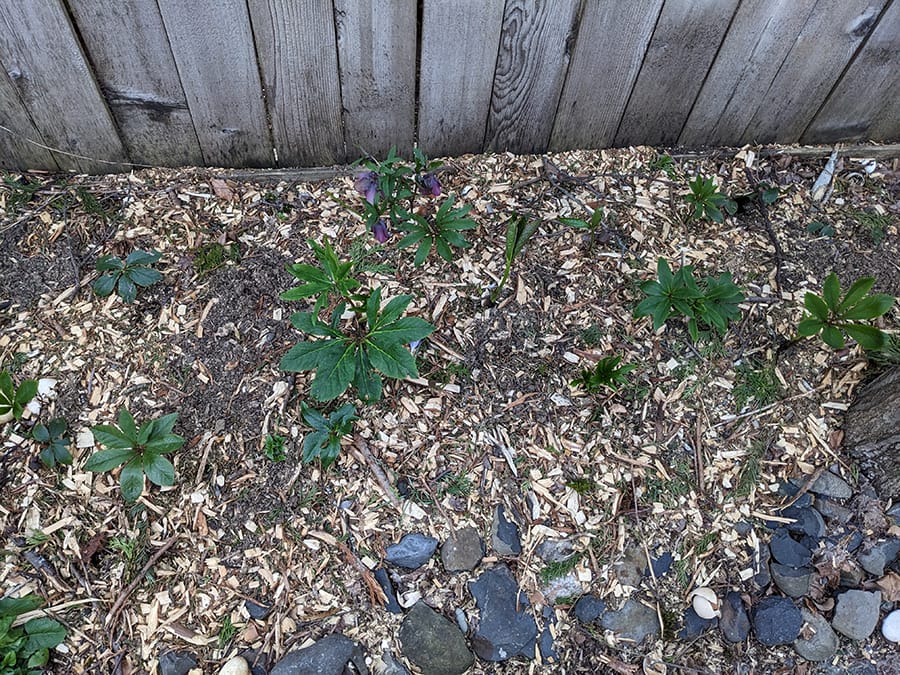
Now comes the second trial with raising your own hellebore crosses. Keeping them alive for 2+ years. Its very rare that hellebores with flower in their first year, if they do you've done something incredibly right or gotten lucky. Most hellebores will not produce blooms until 2+ years of maturing and the first time blooming is rarely true to their mature color.
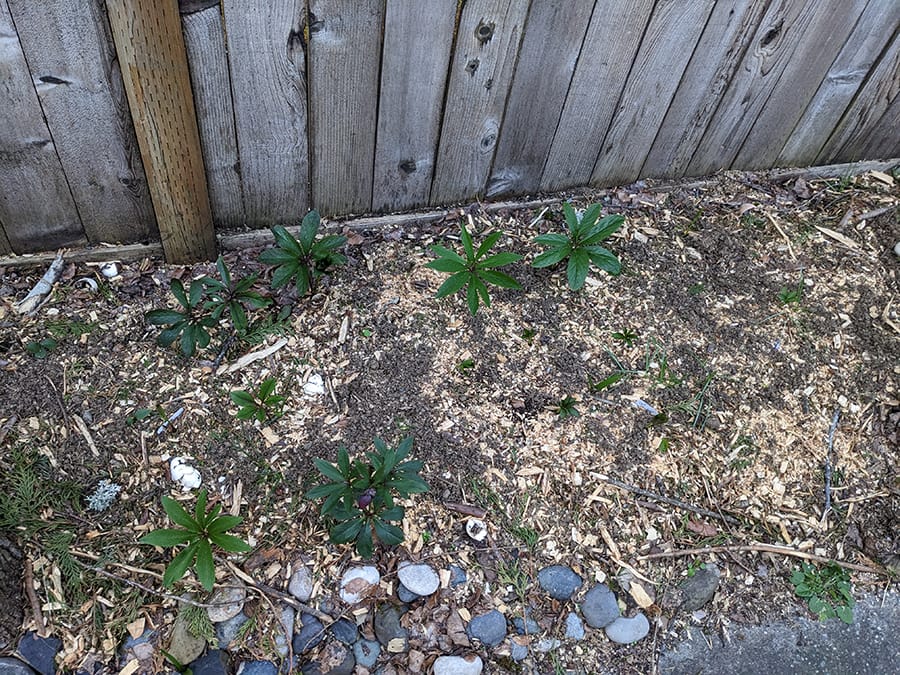
My first successful hellebore seedlings and plants I planted out into this side bed garden a year or two ago and they are just starting to show some results. This years seedlings will go into 1+ gallon pots and live in a little colony on some raised planting shelves I'll be making later....
Someday when I have some robust adult plants with colors I like that are different from existing cultivars I'll face the 3rd hurdle, a trial I have yet been tested with... dividing hellebores...
In the mean time though my parent plants are healthy and my seedlings are doing well and they give me a wonderful bit of (goth) color at a time of year when few other things are growing.
Below are my Parent Plants developed by professional growers and hybridizers.
